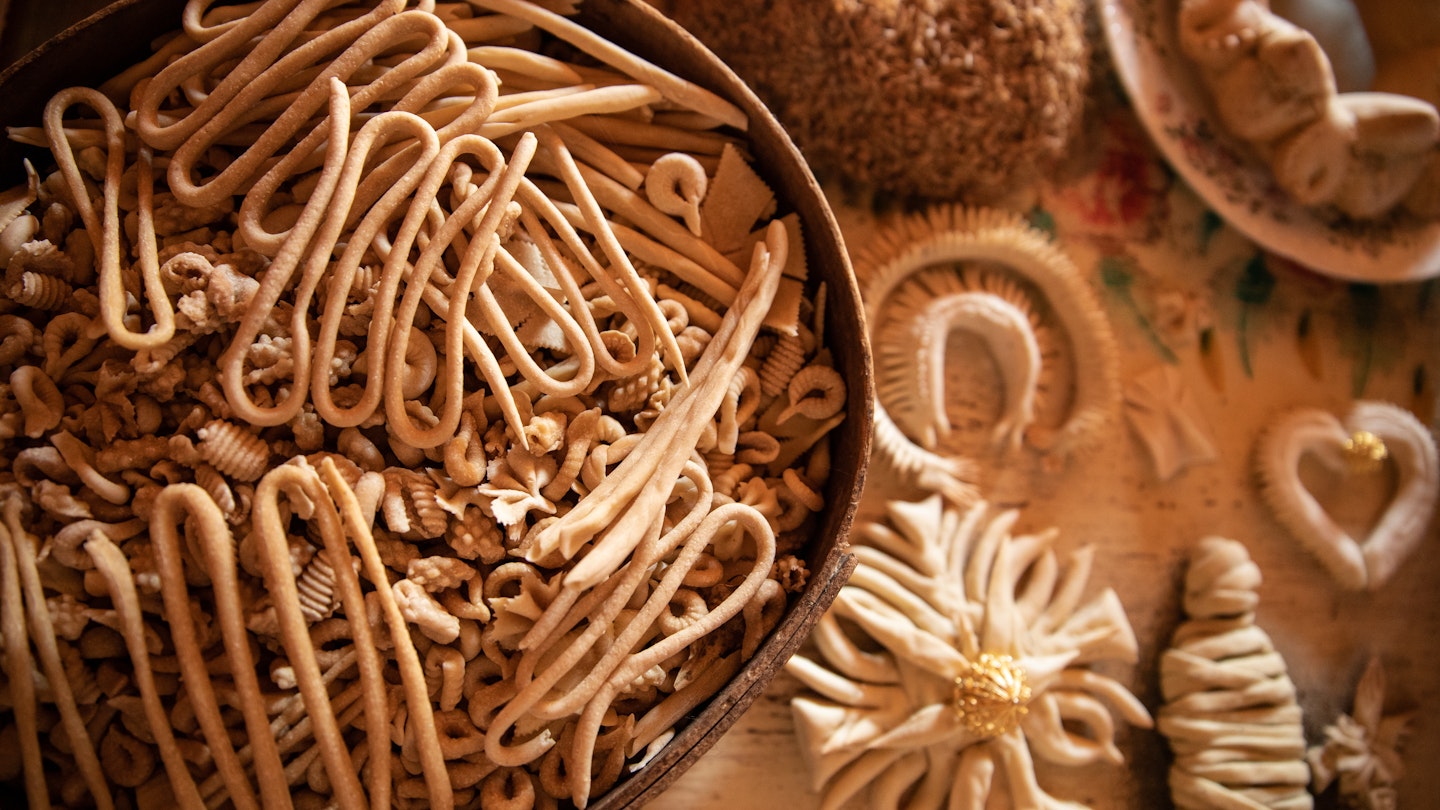Sardinia is known for its cuisine and the longevity of its people. However, it also has one of the highest rates of type one diabetes in the world.
The table at Somu presents an exquisite feast: the amuse-bouches arrive as perfect as a baby’s toes; a beautifully presented oyster appears as though painted by Mondrian; a glass of Sardinian vermentino gently perspires in the warmth of the afternoon.
To me, this table denotes a puzzle. As a type one diabetic, I must inject myself with insulin to manage the sugar and carbohydrates in the delightful dishes, including the mysterious snacks that may elevate my blood sugar levels. The bread, however, poses the biggest temptation. Therefore, I take eight units of fast-acting insulin and hope for the best.
Ordinarily, I’d hide my injection in a restaurant—especially one as plush as Somu. Yet, unlike many places globally, there’s no need to conceal my condition in Sardinia.
To health… and prosperity
This Italian island has the second highest global rates of type one diabetes, trailing only Finland. Autoimmune conditions are prevalent as well. While Sardinia appears idyllic—sun-splashed and embodying the glory of the Mediterranean—it confronts some astonishing health challenges. Nevertheless, it is also recognized as one of the world’s rare Blue Zones, where residents are more likely to live to 100 than in comparable regions.
These contradictions fade into the background as Somu servers deliver stunning, Michelin-starred dishes inspired by traditional Sardinian cuisine. “Sardinia is too important to me,” says head chef Salvatore Camedda after lunch, who aims to express his passion for his homeland. “The big difference between us and mainland Italy is that all our food is influenced by the sea. Our produce embodies art and elegance, giving us an authentic and genuinely unique taste.”

Traveling east into the wider northeastern region reveals little notion of illness. That evening in Porto Cervo, I dine at Lucina, a clifftop restaurant with breathtaking views across the bay. This corner of Sardinia epitomizes contentment and wealth, creating an atmosphere where arriving in anything less than a yacht feels inappropriate. Billionaires grace the marina, flaunting extravagant attire as they indulge in their privileged lives.
The fortunes here—both financial and existential—are astounding. It’s easy to believe that the only health issues in this part of Sardinia stem from type two diabetes, which often results from indulgence and age.

Type one diabetes differs as the immune system attacks the pancreas. One theory suggests high rates of this condition in Sardinia stem from the population’s historical exposure to malaria. After the Second World War, eradication efforts successfully eliminated the disease; however, Sardinians’ immune systems turned inward, leading to higher autoimmune rates. As Moises Velasquez-Manoff writes, ‘Those who were resistant to the parasite survived; those who weren’t died… but the highly specialized Sardinian immune system functions properly only in the context of the invader it evolved to thwart.’
Nonetheless, unless one knows what to look for, instances of diabetes appear invisible as one strolls the beaches. I saw a little boy with a blood sugar monitor and a local man recognized mine, giving me an understanding nod. Interactions like these highlight the community’s acceptance amidst the culinary delights.
Carbohydrate complexities
Inland at the Cascioni Eco Retreat, I engage with chef Fabio Vacca, who acknowledges that after malaria’s eradication, local health issues intensified. “I’ve heard about people developing allergies to broad beans and peas,” he notes before the dinner service begins.
The daily menus here prioritize healthy, organic foods, reflecting the bounty of their 3,000-tree olive farm. Although the food isn’t specifically designed for diabetics, its quality is undeniable. When asked about his favorite Sardinian dish, Vacca promptly responds: pasta.
In the land of irresistible carbohydrates, those with diabetes face a unique challenge. While addiction to bread and pasta persists despite diabetes’ prevalence, these beloved staples can be detrimental for those with insulin resistance.

Visiting Simonetta Bazzu’s family home, I encounter an array of scrumptious local dishes. Bazzu, an experienced pasta maker, highlights her commitment to preserving traditional cooking styles and engaging visitors in the process. Her expertise and pride in her heritage are palpable as she serves delicious homemade Sardinian breads, pastas, and salads from her history-rich home. “Here we have 200 different types of pasta and 1300 types of bread,” she shares enthusiastically, emphasizing her heritage’s culinary significance.
Into the rocky heart
Mountains dominate Sardinia’s interior, where pastoral land gives way to inhospitable terrain. When writer DH Lawrence visited a century ago, he felt overwhelmed by its beauty and health issues. “The natives don’t like to admit there is any malaria,” he remarked, highlighting the cultural resistance to acknowledging health problems.
As I move towards Oliena, strong mountains cast their shadows over the town. Here, English-speaking visitors are rare, and communication becomes an adventure as I navigate local customs.

Dining at Sa Corta, I experience traditional Sardinian cuisine. The flow of delicious dishes is relentless, each contributing to the convivial atmosphere. The rich flavors momentarily distract my focus from managing my insulin dosage. Yet, maintaining control is vital for my health, as insulin allows me to manage blood sugar effectively and avoid serious complications associated with diabetes.
Big city living
While mosquitos might have vanished from Cagliari, Sardinia’s largest city, the warmth of the afternoon draws me to local dining spots. Here, competition for outdoor tables is minimal as locals prefer the comfort of air conditioning.

As I conclude my culinary journey, the traditional dishes reflect Sardinia’s rich heritage. While diabetes presents challenges, the cultural and gastronomical experiences offer a deeper understanding of local life and its culinary commitments.





